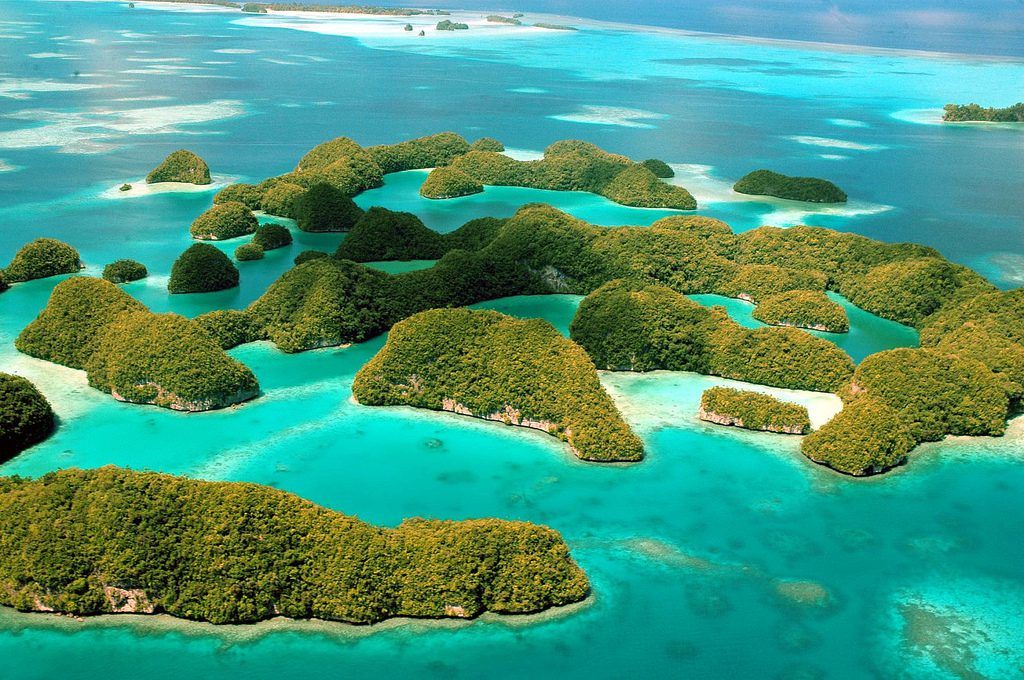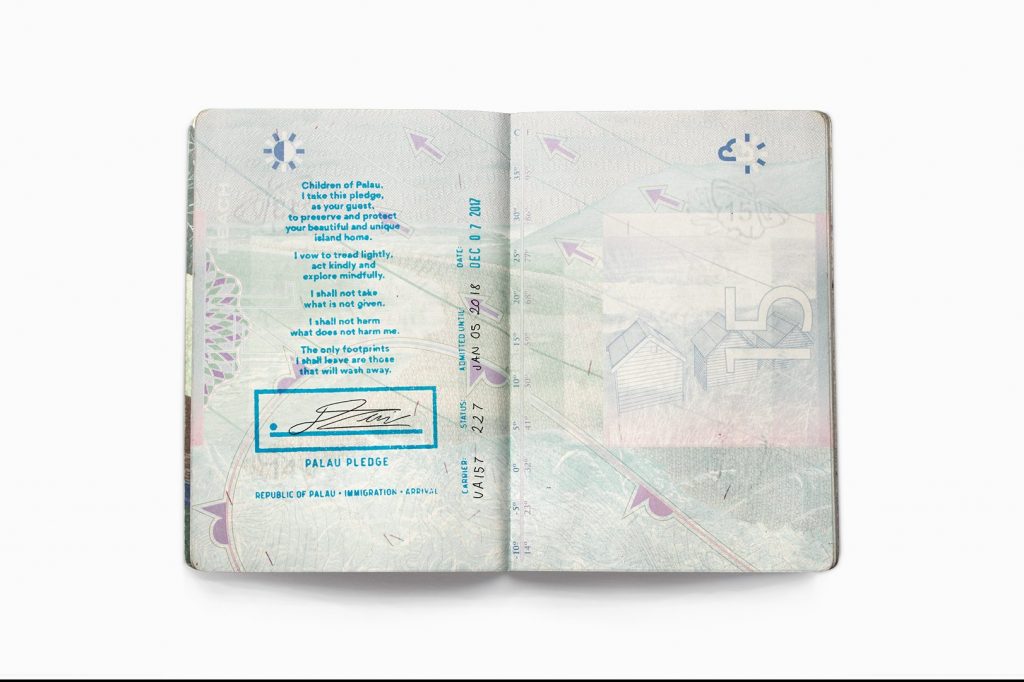Skift Take
The hugely celebrated campaign, Palau Pledge, has not brought in more arrivals to Palau, which is also being hit by a China ban. Nobody should expect it to. Here’s why.
There is something sexy about the idea of a tiny nation standing up for itself. Palau, an archipelago in the western Pacific Ocean with a population of just over 22,000, did that twice in the last year.
First, it stood up to tourists, asking for, in not so many words, respect from them. The Palau Pledge campaign is the first in the world to ask visitors to sign a declaration in passports to protect its environment and culture for the next generation, a move that has since been followed by Hawaii and New Zealand.
It also stood up to China, which is said to ban tours to the island because it continues to maintain diplomatic ties with Taiwan.
China came from nowhere to elbow out Japan as Palau’s top market in fiscal year 2015 with over 90,000 Chinese tourists. Total arrivals shot to nearly 170,000 for the first time that year.
But by fiscal year 2018, Chinese arrivals stood at just over 50,000, forcing Palau Pacific Airways to suspend “indefinitely” last July its Hong Kong-Palau flights. In a statement to Congress, as reported by the local Island Times, the airline group said “the Chinese government made Palau an illegal tour destination possibly and most likely due to lack of diplomatic status.”
It added this was not a severe problem before 2017 but had become a “very serious problem with the Chinese government seemingly putting an effort to slow or stop tourists from going to Palau in 2017.”
Earlier, in May 2018, Delta Air Lines axed flights from Japan’s Narita to Palau, and Saipan, citing lower demand for Micronesia.
As a result, arrivals from all markets except Taiwan also dropped in fiscal year 2018, although not as drastically as the China decline. Total arrivals, just over 115,000, went back to 2013 levels.
Palau Pledge is inclusive
The reality of having around eight times more tourists than residents on an archipelago with the total area of 460 square kilometers weighed on the idea to launch the Palau Pledge campaign a year ago.
But co-founder of the Palau Legacy Project, Laura Clarke, stressed the pledge was not addressed to any nationality or designed to keep anyone out. “It is inclusive, warm and welcoming to all visitors to Palau,” she said.
It was also never its aim to increase — or decrease arrivals — but to be “preventative in nature,” Clarke told Skift.
“Palau has taken note of the degradation in other destinations and wanted to take preventative action to stop that happening in Palau. Pledge is just one of the many initiatives implemented by Palau to ensure that its incredible pristine paradise is protected for generations to come,” said Clarke.
She denounced as “false” reports of too many Chinese destroying Palau’s pristine state. A South China Morning Post article in 2015 on the “onslaught” of Chinese tourists quoted a taxi driver saying they wrecked corals and threw rubbish in the sea, and residents accusing Chinese tourists of being responsible for the deaths of some jellyfish in the Jellyfish Lake.
Jellyfish populations declined drastically in 2016, but this was due to a drought experienced throughout Palau that year, which might also account for the arrivals decline in subsequent years. But last month the Coral Reef Research Foundation declared the jellyfish populations were rebounding and there are now enough numbers to provide visitors with quality experience.
Huge impressions but no new visitations
As a marketing and PR campaign, the Palau Pledge was brilliant, winning over 70 international awards, comprising 16 Grand Prix’s, including the highly coveted D&AD Black Pencil, the Titanium Grand Prix at the Cannes Lions International Festival of Creativity, and the inaugural United Nations Sustainable Development Goals Grand Prix.
But despite drawing over two billion media impressions, according to a first anniversary statement last month, and signed by over 150,000 people including high-profile ones such as former U.S. Secretary of State John Kerry, Queen Noor of Jordan, Leonardo DiCaprio, and Richard Branson, the huge limelight worldwide has not translated into more arrivals or new markets for Palau, at a time when it most needs it.
But the managing director of a dive center and eco-adventure agency is happy with it. “The mix and number of visitors have gone back to the historical split and trend prior to the 2015 PRC market influx,” he told Skift.
“Palau always has attracted high value customers because it is primarily one of the best diving destinations in the world. It is going back to what it was before; high yield yet very environmentally conscious customers.”
But he too was quick to add, “It is not about any nationality. It is all about managing the sites. Pledge alone should not be the only solution, and the communities are now coming together to put additional plans [such as] Koror state tour guide licensing, business accreditation program and the new tourism policy that was recently passed.”
He’s referring to the government’s policy to go for high quality, low impact tourism.
Clarke meanwhile believes the pledge has had an impact in changing tourist behavior, although evidence is anecdotal.
“The psychology of signing an official document like a passport and having to sign an arrivals form that makes you opt into keeping the terms of the pledge is deep and cannot be underestimated. It’s far more than just marketing and PR,” she said.
The pledge tugs at the heartstrings, written by the children of Palau, according to its marketers, and addressed directly to them. It is stamped on passports for visitors to read and sign; anyone could also sign it on the website.
An inflight video is also screened for passengers, in which Palau children explain the impact visitors can have on their home. Signage and information packs are placed around Palau’s airport terminal and throughout the country to remind visitors about the conditions of the pledge once they arrive.
Added Clarke, “These things take time to measure properly — to definitively say what the impact of pledge has been on visitor behavior and the environment in under a year was never going to be possible. It’s complex and has never been done/measured before hence why we are now working with Host/Havas, Palau Bureau of Tourism and the United Nations World Tourism Organization to devise best practice measurements for the pledge and implement that.”
Phase two of Palau Pledge
Host/Havas is the Australian advertising and communications agency that created the campaign, which was the brainchild of Clarke and three other marketeers and Palau residents, Nanae Singeo, Jennifer Koskelin-Gibbons and Nicolle Fagan, under the voluntary Palau Legacy Project.
Aside from developing best practice measurements, phase two will see the launch of an accreditation program for businesses that act according to the pledge, giving them a marketing tool to help attract high-value, conscientious visitors. As well, developing the pledge adjunct to the educational curriculum for school-aged children.
The Australian and Italian governments, along with the Cannes Lion United Nations Sustainable Development Goals program, are backing phase two with grants, said Clarke.
Mario Hardy, CEO of the Pacific Asia Travel Association which counts Palau as a member, wished many countries would follow the Palau Pledge. “
It sends a clear message to visitors and those thinking of visiting. You come to our Islands and you will be welcome as long as you respect us. A clear message that quality tourist is better than masses,” he said.
“If the islands of Palau are being respected by the visitors, it should be felt by its people and the environment and therefore can be easily witnessed and measured by its people,” he said.
And that, is probably the best measurement of the effectiveness of the pledge, not the standard yardsticks of tourism arrivals and dollars.
The Daily Newsletter
Our daily coverage of the global travel industry. Written by editors and analysts from across Skift’s brands.
Have a confidential tip for Skift? Get in touch
Tags: conservation, marketing
Photo credit: A series of rock islands in Palau. Travelinsider / VisualHunt

